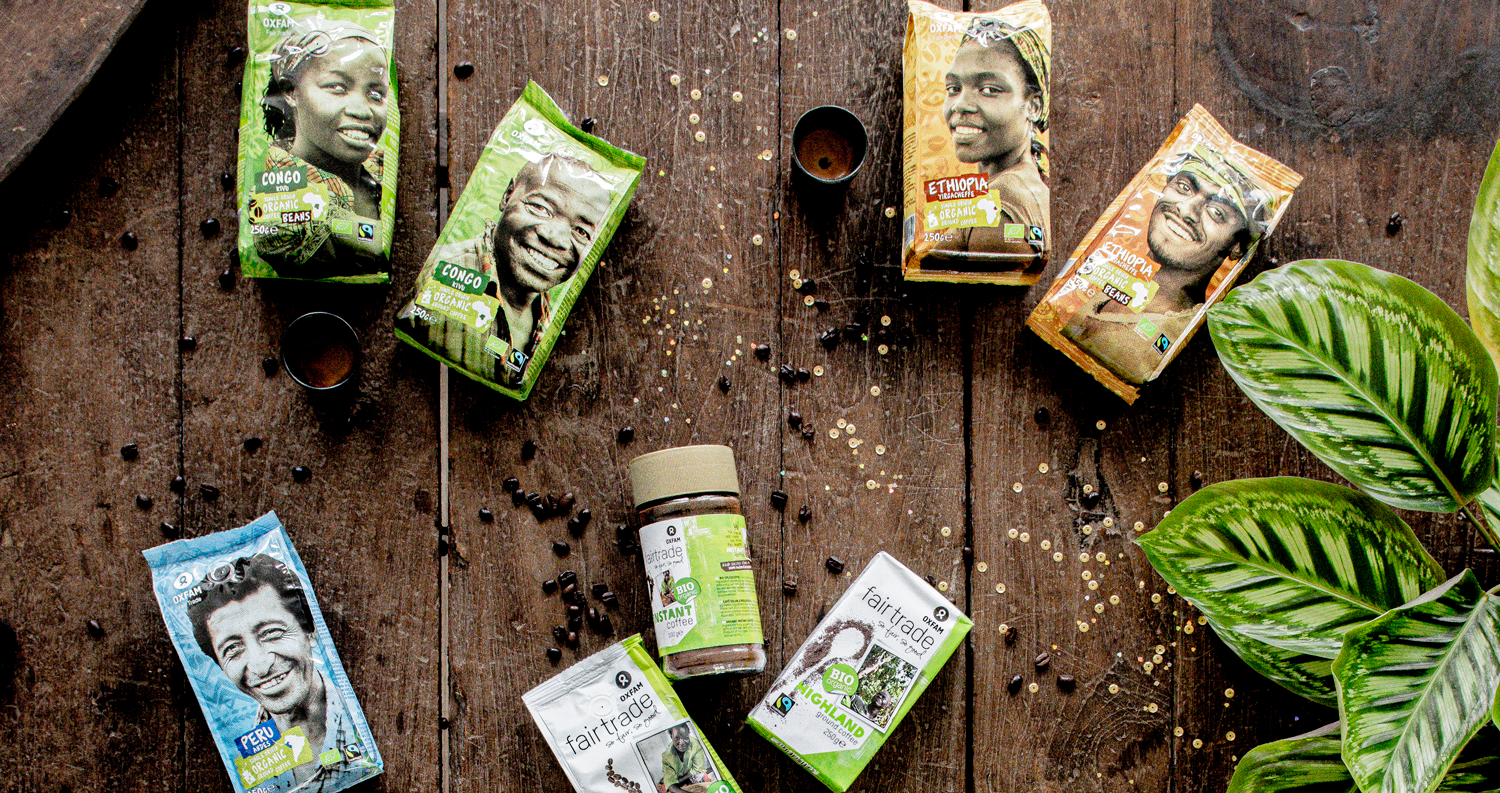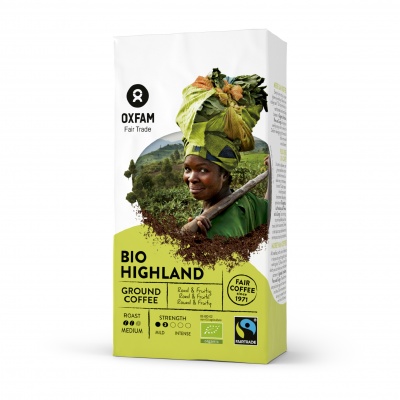
What’s your favourite coffee?
Colours and flavours may be obvious but when it comes to coffee a few words of explanation about colour and flavour sure come in handy. Because what does 'lightly roasted' mean exactly? What is ‘acidic’ and what do we mean with ‘fruity’ on the package? How do you make the absolutely, positively, perfect cup of coffee? Here's an overview to make it easier to choose the best coffee for your customers, visitors and employees.
Colours and flavours may be obvious but when it comes to coffee a few words of explanation about colour and flavour sure come in handy. Because what does ‘lightly roasted’ mean exactly? What is ‘acidic’ and what do we mean with ‘fruity’ on the package? How do you make the absolutely, positively, perfect cup of coffee? Here’s an overview to make it easier to choose the best coffee for your customers, visitors and employees.
It all begins with the beans
Without high-quality coffee beans you’ll never get delicious coffee. That makes sense. But there are dozens of varieties, each with their own unique characteristics.
Arabica or Robusta?
Arabica and Robusta are two types of coffee with their very own characteristics:
- Arabica coffee has large, elongated beans. They grow at higher altitudes than Robusta beans, which gives them a more refined flavour (and the higher the altitude, the higher the quality). Unfortunately they are more difficult to cultivate because they are more vulnerable to disease and frost. When it comes to flavour the Arabica family has a lot of variation: fruity, spicy, creamy, …
- Robusta coffee has smaller beans but big flavour. The fewer flavour variations certainly don’t mean that Robusta can’t be of very high quality too. Robusta is ideal in a coffee blend (or mélange) to make it that little bit stronger. That’s thanks to the high level of caffeine in the beans. Robusta is an essential element in espresso and gives it that gorgeous foamy top. The Robusta beans in the Oxfam blends grow at relatively high altitudes. That makes them – in addition to the typical Robusta characteristics – mild with hints of chocolate and a creamy body.
Origin determines the flavour
Coffee shrubs — both Robusta and Arabica — only grow in the so-called coffee belt, the equatorial region between the Tropic of Cancer and the Tropic of Capricorn. The general rule is: the higher in the hills the plant grows the better the end product.
But the location on the planet is not the only thing that determines your coffee’s final flavour.
The producer’s working methods also play a crucial role. In short, time, patience and small-scale agro-ecological methods give the best quality. A coffee plant that grows in the shade of larger trees invariably produces better berries (beans) because they ripen slower. Hand picking — and only harvesting the 100% ripe berries — is also an indicator of high-quality coffee.
And the next step can also be decisive: hand-picked coffee berries must be processed as fast as possible. Oxfam Fair Trade’s producers always do this ‘fully washed’, a method in which the quality is checked again when the berries are washed.
Sweet and sour in perfect balance
A master coffee roaster is always searching for the perfect balance between sweet and sour flavours in the coffee. Because you can’t have one without the other. Coffee specialists base their assessment, in addition to their highly-developed sense of taste and smell, on the Coffee Tasters Flavor Wheel from the internationally recognised coffee organisations Specialty Coffee Association of America and World Coffee Research.
Coffee experts describe that sour, crisp aspect as acidity. You’ll find it in many of the Oxfam Fair Trade coffees. That’s because it’s typical of the coffee from Africa, where we buy a great deal of our coffee.
If you enjoy that typical fruity flavour then you absolutely must try the Highland coffee. And the single origins from Congo and Ethiopia also have this deliciously unique asset. Even our Dessert coffee combines a strong aftertaste with fresh acidity, somewhat atypical for dessert coffee.
About blends and roasting
Sophisticated blend…
Our own barista creates the various Oxfam Fair Trade blends together with the master coffee roaster. They combine the very best from various types of coffee to create a unique product. A blend combines coffee types from various regions and from both Arabica and Robusta.
We ensure the flavour of our blends is always consistent. So a Dark Roast always tastes like a Dark Roast, for example, and not suddenly like a Highland. To achieve this we make regular modifications to the contents of the blend. You can always see which farmer our coffee comes from on the various coffee product pages.
… or single origin
When a pack of coffee contains only one type of coffee from a particular region we use the term ‘single origin’ or ‘specialty coffee’. A name that stands for quality because what you see is what you get. This coffee gives you the pure flavour from one specific region. And that can vary from harvest to harvest, which makes it even that little bit more special.
But the unique characteristics of an origin always shine through. So in the specialty coffees from Oxfam Fair Trade you’ll always taste the acidity of rhubarb and blackberries in the Congo coffee, the nutty flavour in the Peru coffee and the blossoms and spices in the Ethiopia coffee.
All three of these varieties come from a high-altitude region — a synonym for top quality — and are roasted in one of the best roasting houses in Belgium.
Roasted with precision
Dark or light, short or long, the roasting process determines for a large part how the coffee in your cup tastes.
So what happens during roasting? The coffee churns around in a closed roaster while hot air, 190-230°C, circulates. The coffee not only gets its brown colour during this process; its hidden secrets are also revealed: caffeine, acids, even proteins.
For the Oxfam Fair Trade coffee we differentiate between 3 grades of roasting:
- Light roast coffee is roasted for a short time at a relatively low temperature. The natural flavour of the beans is retained and the sweet or acidic hints are more prominent. This light roast is therefore very popular with those who like their coffee black. It’s also the reason why we use a light roast when we do taste tests and quality controls.
- Medium roast coffee is in the roaster longer and at a slightly higher temperature. The flavour of this coffee is situated — logically — between its light and dark roast cousins. The ideal choice for coffee drinkers who prefer a bitter aftertaste or like their coffee with milk.
- Dark roast coffee is roasted for a long amount of time and at the highest temperature. During this process the coffee’s natural flavours, for a large part, take a back seat to the aromas that are created by the roasting process. In general this makes the coffee more bitter, called ‘smoky’ or ‘ashy’ by the aficionados. Perfect for fans of espresso and other espresso-based drinks such as cappuccino, latte macchiato …
BTW, you can take ‘light’ and ‘dark’ roast literally: dark roast coffee beans are clearly the darkest brown in colour.
Your favourite way to brew: the finishing touch
How do you brew your coffee? Do you use a filter, French press or an espresso machine? Do you have a favourite coffee blend or single origin? The choice is all yours, as long as you use a brewing method that suits both your coffee and your machine. So be sure to follow the directions on our packages. You’ll see how much better your coffee tastes if you make it the right way.
Espresso
Due to its short contact time with water espresso doesn’t contain a great deal of caffeine. But the high pressure from the machine gives it that strong flavour.
You’ll make a perfect espresso or lungo with our Espresso beans. And definitely try making a mini cup of espresso with the Dessert coffee. Or go for a surprising, more acidic espresso with our BIO Highland coffee.
French press (cafetière) or Bialetti (moka pot)
Use a coarser ground coffee so you don’t get grounds in your coffee cup. The great advantage with these machines is that the coffee doesn’t drip through a filter: all the flavour goes straight in your cup.
These brewing methods work fantastic with our Congo coffee (in small amounts) and the new Dark Roast.
Filter coffee
With a filter – like your gran used to make it or with a traditional coffee maker – you make the best ‘slow coffee’. You get the very best out of your coffee thanks to the slow process. The water has lots of time to soak up all the delicious qualities the coffee has to offer.
Try making our Ethiopia single origin this way. Experiment to your heart’s content with the amount of coffee and water you use.
Which Oxfam coffee will you choose?
| Product | Flavour intensity | Roast | Flavour description | Ideal brewing method |
|---|---|---|---|---|
| BIO Highland | Very smooth, rich coffee with a mild body and a fruity, slightly acidic aftertaste. Blend of various types of coffee from high-altitude regions combined to create a complex palate. | filter, traditional coffee maker, pad machine | ||
| Dessert | A fruity and lively coffee with a smooth body and a rather strong aftertaste. | filter, traditional coffee maker | ||
| BIO Decaf | Full and slightly sweet caffeine-free coffee with a mild, smooth body. Decaffeinated without chemicals. | filter, traditional coffee maker, French press, espresso machine, pad machine | ||
| Mocha | Creamy and fruity coffee with a strong flavour and strong aftertaste. | filter, traditional coffee maker | ||
| Espresso | Strong aroma, full flavour. | espresso machine | ||
| BIO Dark Roast | Strong and intense, full-bodied coffee. Hints of dark chocolate and a somewhat smoky caramel flavour. The most intense coffee in our assortment. | filter, traditional coffee maker, French press, espresso machine, percolator | ||
| BIO Capsules espresso | A strong espresso with a full flavour. | capsule machine | ||
| BIO Capsules lungo | A lungo with a rich flavour. | capsule machine | ||
| BIO Instant coffee | Organic instant coffee with a sweet and smooth flavour. | dissolve in hot water | ||
| BIO B2B Instant coffee | This fruity, freeze-dried coffee is of exceptionally high quality. Mild, intense flavour that tastes just like freshly-brewed. | coffee machine | ||
| BIO Ethiopia | Smooth body, rich and floral flavour palate with nice acidity (citrus, peach and cocoa), typical for this world-renowned Yirgachefe coffee. | filter, traditional coffee maker, French press, espresso machine | ||
| BIO Congo | A unique, full-bodied coffee, refined acidic hints of blackberries, rhubarb and spices. | filter, traditional coffee maker, French press, espresso machine | ||
| BIO Peru | Intense coffee with a creamy body. Hints of walnut, dark cocoa and citrus. | filter, traditional coffee maker, French press |
Made your choice?
Would you like personal advice to help you choose? Not sure which coffee suits your machine? Or would you like to lease or purchase a complete package — coffee plus machine? One address: our sales department!
